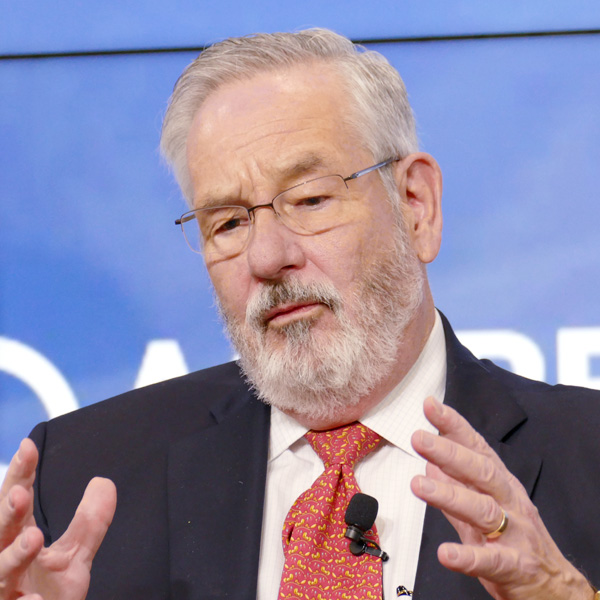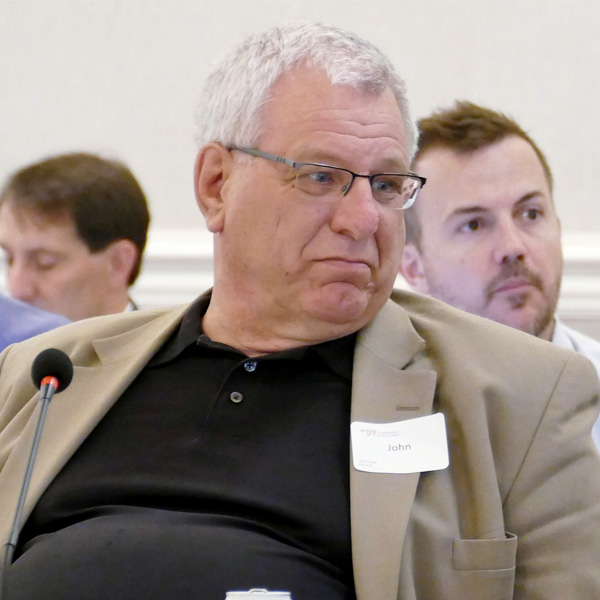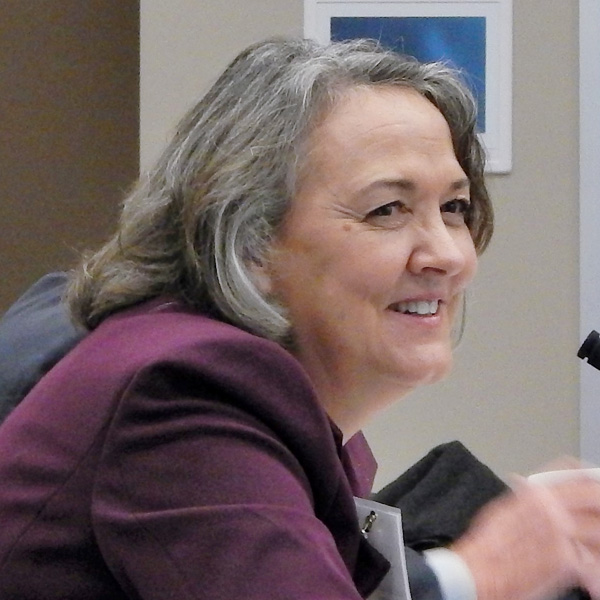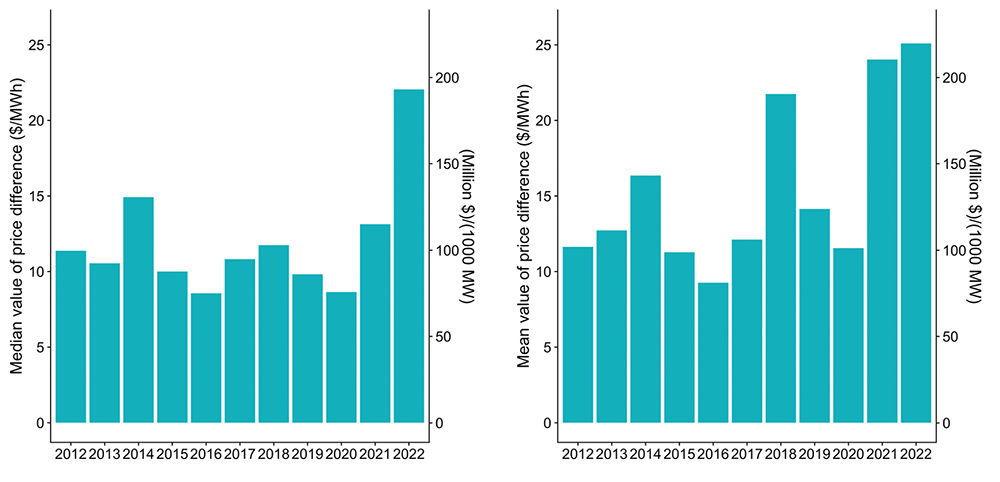House Republicans and Democrats squared off Tuesday over a series of 17 proposals from the new GOP majority to lessen environmental and other regulatory barriers to domestic energy production.
Each side made their points in exchanges with witnesses generally aligned with their own points of view, stressing the importance of passing or not passing the measures.
As more than one Democrat pointed out, however, entire pieces of the Republican package stand little chance of becoming law because of opposition from the Democrats who control the Senate and White House.
The joint Energy, Climate, and Grid Security Subcommittee and Environment, Manufacturing, and Critical Materials Subcommittee legislative hearing was titled “Unleashing American Energy, Lowering Energy Costs and Strengthening Supply Chains.”
As the name implies, the measures being discussed would codify some items on the wish lists of U.S. fossil fuel companies and their Republican allies.
The GOP took control of the House only a month ago, and most of the 17 bills and resolutions had not yet been formally introduced Tuesday morning as testimony started.
Among other things, the bills would:
- bar a moratorium on fracking;
- repeal the methane emissions tax included in the Inflation Reduction Act of 2022;
- improve state and federal interagency cooperation to build interstate natural gas pipelines;
- repeal all restrictions on import and export of natural gas;
- repeal the greenhouse gas reduction fund;
- authorize the Environmental Protection Agency to issue flexible air emissions permits for certain facilities; and
- ban import of certain uranium from Russia.
Witness Testimony
The witnesses at the hearing ranged from a former FERC member to a leader in the environmental advocacy legal organization Earthjustice.
Rep. Brett Guthrie (R-Ky.) sprinkled personal experiences and world events into a statement on the importance of the U.S. producing enough fuel for itself and friendly nations and asked for witnesses’ thoughts.
Jeffrey Eshelman, II, CEO of the Independent Petroleum Association of America, said: “If we continue to produce oil here at home, those are jobs that remain; if we would stop exporting the oil, those jobs disappear. It actually helps when we’re producing more here and … exporting, to keep those wells pumping. … It helps our allies, and it helps our own national security.”
Rep. John Sarbanes (D-Md.) asserted that the GOP drive to “unleash American energy” is often designed to unleash profit-making by big oil companies by eroding bedrock environmental laws at the expense of the health and safety of American people. He asked if there was truly a binary choice between protecting the safety of communities and producing energy.
Raul Garcia, legislative director for healthy communities for Earthjustice, said: “We can absolutely do both. We have the technology, and, in fact, some of the legislation presented today would actually curtail that technology, which is sad to see.”
Rep. Morgan Griffith (R-Va.) spoke of the coal bed methane capture project underway in his district, at the largest coalmine in the state. This technology could work to capture other leaks of the potent greenhouse gas, he said, “but they don’t get any credit for having a clean, efficient way because it’s the dreaded fossil fuel, it’s natural gas.”
Bernard McNamee, appointed a FERC commissioner by President Trump in 2018, said American innovation has produced many advances in energy production, and the methane capture Griffith described is one more useful tool. “It’s great to talk about, ‘We think we can go 100% renewable,’ but the reality is, with the technology we have today, we have to have dispatchable energy, and that’s going to come from natural gas, from the methane that’s captured at the coal seam.”
Mark Menezes, a deputy energy secretary under Trump, said there are multiple existing technologies that can protect the climate. “Remember, our quest here is not to choose one type of energy over another, our quest here to solve the climate problem is to reduce emissions.”
Rep. Larry Bucshon (R-Ill.) called out those pushing for widespread electric vehicle adoption while simultaneously opposing U.S. mines that would produce the lithium, cobalt and other materials needed for EV batteries. America, he said, needs to not rely on slave labor in Africa and the output of Chinese factories for these materials.
Katie Sweeney, executive vice president of the National Mining Association, thanked Bucshon for his words and said the proposed legislation would make more people aware of the critical connection between minerals and energy. “There isn’t any form of energy that doesn’t rely on minerals as the base of that energy … it’s not just the mines themselves but the processing that needs to take place here in the U.S.”
Rep. Scott Peters (D-Calif.) took some swipes at his Republican colleagues but spoke of the need for bipartisan updates to energy policy; he found some agreement from witnesses on both sides of the aisle.
He asked Menezes — who helped negotiate the Energy Policy Act of 2005 — about streamlining the approval process for interstate transmission construction. Menezes replied that then as now, there are probably more difficult things to accomplish than siting and building interstate power lines, but he couldn’t think of any. Such power lines will be critical to the green energy transition, he said, and “I think this is something that’s certainly within this committee’s jurisdiction to take another look at.”
Peters asked Tyson Slocum, director of the energy program at Public Citizen, whether the oil and gas industry would reduce its emissions of methane without the incentives and oversight contained in the Inflation Reduction Act.
“I don’t think so,” Slocum said. “I think you need to have that regulatory structure in order for the industry to make those investments.”
GOP Proposals
The prepared testimony of the six witnesses and the wording of the 17 pieces of proposed legislation are available on the House Energy and Commerce Committee webpage.
A summary of the legislation follows.
Three bills introduced:
- H.R. 150, Protecting American Energy Production Act: Prohibits a moratorium on the use of hydraulic fracturing unless authorized by an Act of Congress.
- H.R. 484, Natural Gas Tax Repeal Act: Eliminates the tax added to the Clean Air Act last year.
- H.R. 647, Unlocking Our Domestic LNG Potential Act of 2023: Amends the Natural Gas Act to repeal all restrictions on the import and export of natural gas.
Fourteen bills and resolutions expected to be introduced:
- Promoting Cross-border Energy Infrastructure Act: Establishes a more uniform, transparent and modern process to authorize the construction, connection, operation and maintenance of international border-crossing facilities for the import and export of oil and natural gas and the transmission of electricity.
- A concurrent resolution expressing disapproval of the revocation by President Biden of the presidential permit for the Keystone XL pipeline.
- Promoting Interagency Coordination for Review of Natural Gas Pipelines Act: Improves coordination among federal and state agencies reviewing applications for the construction of interstate natural gas pipelines.
- Securing America’s Critical Minerals Supply Act: Amends the Department of Energy Organization Act to require the secretary of energy to conduct an ongoing assessment of the nation’s supply of critical energy resources, the vulnerability of the critical energy resource supply chain and the importance of critical energy resources in the development of energy technologies.
- Critical Electric Infrastructure Cybersecurity Incident Reporting Act: Amends the Federal Power Act to authorize DOE to promulgate regulations to require critical electric infrastructure owners and operators to share information regarding cybersecurity incidents with DOE.
- A bill to require the secretary of energy to direct the National Petroleum Council to issue a report on the importance of petrochemical refineries to U.S. energy security, and the opportunity to expand their capacity.
- A bill to amend the Clean Air Act to prohibit the phase-out of gasoline and prevent higher prices for consumers and for other purposes.
- A concurrent resolution expressing the sense of Congress that the federal government should not impose any restrictions on the export of crude oil or other petroleum products.
- A bill to repeal section 134 of the Clean Air Act, relating to the greenhouse gas reduction fund.
- A bill to authorize the administrator of the Environmental Protection Agency to waive application of certain requirements, sanctions or fees with respect to processing or refining of critical energy resources at a critical energy resource facility, and for other purposes.
- A bill to amend the Toxic Substances Control Act with respect to critical energy resources, and for other purposes to address repeated delays with EPA reviewing and making legally mandated, timely determinations of pre-manufacturing notices for new critical energy resources and new uses of existing critical energy resources.
- A bill to amend the Solid Waste Disposal Act to treat the owner or operator of a critical energy resource facility as having been issued an interim permit for the treatment, storage and disposal of hazardous waste, and for other purposes.
- A bill to require the EPA administrator to authorize the use of flexible air permitting with respect to certain critical energy resource facilities, and for other purposes.
- A bill to prohibit the U.S. from importing unirradiated low-enriched uranium produced in the Russian Federation.




